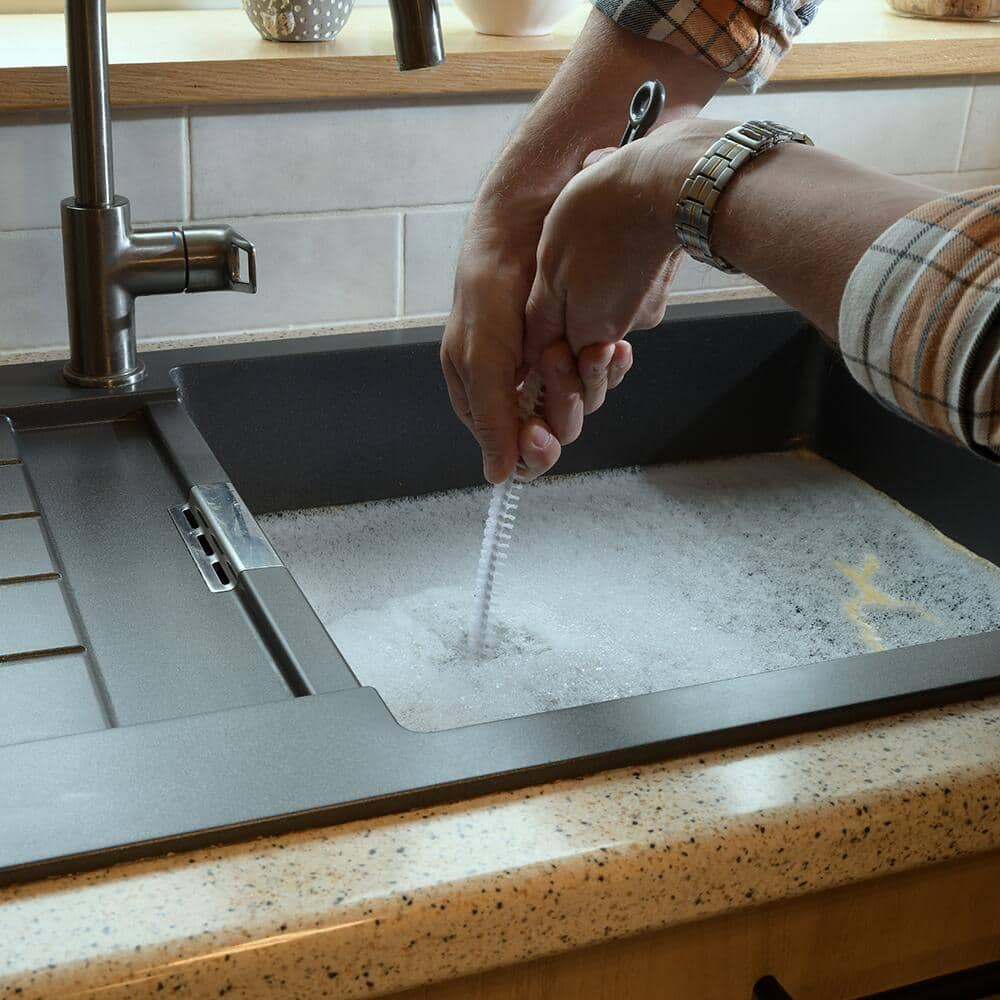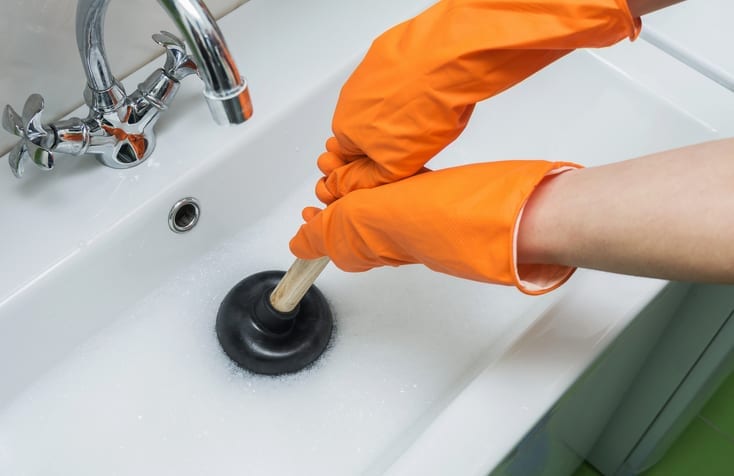In this article on the next paragraphs you can find some really good additional info around A Guide to Plungers (and How to Use Them).

Intro
Appropriate upkeep of house drains pipes is vital for protecting against clogs and ensuring smooth water flow. Among the key tools in every home owner's toolkit is the plunger, together with different drainpipe cleansers designed to tackle persistent obstructions effectively. This short article checks out how to utilize bettors and drain cleansers effectively to keep your drains pipes streaming openly.
Area 1: Recognizing Plungers
Types of Plungers
There are a number of sorts of bettors readily available, each created for different sorts of drains pipes and blocks. One of the most typical types consist of cup plungers, flange bettors, and accordion bettors.
How Plungers Job
Plungers service the principle of developing pressure and suction to displace obstructions. When appropriately used over a drainpipe, they produce a vacuum cleaner that can pull out debris or break up blockages.
Selecting the Right Bettor
Choosing the best plunger depends upon the sort of drainpipe and the nature of the clog. Cup plungers are perfect for sinks and tubs, while flange plungers are much better fit for toilets due to their design.
Typical Blunders with Bettors
Avoiding these errors makes sure effective plunging: incorrect seal around the drain, not enough pressure, and unclear surrounding particles.
Area 2: Utilizing Plungers Properly
Preparation
Prior to diving, guarantee the bettor covers the drainpipe entirely and forms a limited seal. Clear any type of visible particles around the drainpipe opening.
Method
Beginning with gentle plunging motions to construct suction. Increase pressure slowly, utilizing a stable rhythm. Repeat as needed until the drain clears.
Repairing Tips
If plunging does not work, try changing the seal, using petroleum jelly for a much better seal, or using a various type of plunger.
Section 3: Comprehending Drain Cleansers
Sorts Of Drain Cleaners
Drain cleaners can be chemical or enzymatic. Chemical cleansers make use of strong chemicals to dissolve obstructions, while enzymatic cleansers make use of natural enzymes to break down raw material.
Exactly How Drainpipe Cleansers Job
Chemical cleansers react with blockages to liquify them, while enzymatic cleaners break down organic products like hair and oil without harming pipes.
Security Factors to consider
Always put on gloves and eye defense when utilizing chemical drainpipe cleaners. Make sure sufficient air flow and adhere to supplier instructions carefully.
Eco-Friendly Alternatives
Take into consideration using vinegar and cooking soda or enzyme-based cleansers for environmentally friendly choices that are more secure for pipes and the environment.
Section 4: Utilizing Drainpipe Cleaners Properly
Application Methods
Put chemical cleansers directly into the drain opening. Enable them to benefit the recommended time before flushing with warm water. Enzymatic cleaners must rest overnight.
Precautions
Prevent blending different kinds of cleansers, as this can generate toxic fumes. Never ever utilize chemical cleansers combined with a plunger, as splashing can occur.
Taking Care Of Stubborn Clogs
For persistent clogs, consider utilizing a plumbing serpent or calling a professional plumbing technician to stop damages to pipes.
Verdict
To conclude, understanding exactly how to use plungers and drainpipe cleansers effectively is vital for maintaining healthy and balanced plumbing systems. By selecting the right tools and strategies, homeowners can take on small blockages and stop major plumbing issues down the line.
How To Properly Use A Plumbing Snake To Clear Drains
When any drain clogs in our home arise, we tend to gravitate toward the plunger and little else. In cases where the plunger and its vacuum-created pressure are not able to clear clogs, many immediately move to harmful chemicals or simply call their plumber to fix the issue.
we’re happy to help with all drain cleaning needs and concerns. This includes informing you on a few other home remedies you may have at your disposal for minor to moderate clogs, one of which is the use of a plumbing snake. Many people have never used one of these before – let’s go over the steps to take when your drain clogs and you have a plumbing snake available.
Attempt Plunger Use
The first step here, as we noted above, should indeed be to grab your plunger when you notice a drain clog and attempt to resolve it this way. If you’re unsure how to use a particular type of plunger, our plumbers can answer any questions you have. If this doesn’t do the trick, however, you move on to the snake.
Locate And Prepare Snake
A plumbing snake is a metal or plastic device that’s generally about a quarter of an inch thick. It’s design with significant extensions, meant to reach down into your clogged drain and push the clog out. Snakes also contain drain augers that will latch onto and push stubborn blockages.
If your plunger doesn’t clear a clog, locate your snake and bring it to the drain in question. We also recommend keeping a bucket nearby to collect the clog once you pull it out, plus we’d advise wearing goggles and possibly protective gloves.
Feed Snake
Once you’re ready to go, feed the snake slowly down the drain, using the crank device it comes with to keep it moving until it finds the clog. Once this happens, much of the clog will be latched onto the coil so you can pull it out, while the rest will simply break up and flow downward.
Detach Debris
Remove the snake slowly from the drain, and once you’ve done so, pick off any debris that’s stuck to the coil. This is another area where wearing gloves is a must.
Flush Drain
Finally, take a few minutes to ensure the snake has done its job correctly. If you’ve been using it on a toilet, flush the toilet a couple times and make sure everything flows well. If you’ve used it on a different drain, flush it with some room temperature water.
https://www.mybuddytheplumber.com/blog/how-to-properly-use-a-plumbing-snake-to-clear-drains/

Application Methods
Put chemical cleansers directly into the drain opening. Enable them to benefit the recommended time before flushing with warm water. Enzymatic cleaners must rest overnight.
Precautions
Prevent blending different kinds of cleansers, as this can generate toxic fumes. Never ever utilize chemical cleansers combined with a plunger, as splashing can occur.
Taking Care Of Stubborn Clogs
For persistent clogs, consider utilizing a plumbing serpent or calling a professional plumbing technician to stop damages to pipes.
Verdict
To conclude, understanding exactly how to use plungers and drainpipe cleansers effectively is vital for maintaining healthy and balanced plumbing systems. By selecting the right tools and strategies, homeowners can take on small blockages and stop major plumbing issues down the line.
How To Properly Use A Plumbing Snake To Clear Drains
When any drain clogs in our home arise, we tend to gravitate toward the plunger and little else. In cases where the plunger and its vacuum-created pressure are not able to clear clogs, many immediately move to harmful chemicals or simply call their plumber to fix the issue.
we’re happy to help with all drain cleaning needs and concerns. This includes informing you on a few other home remedies you may have at your disposal for minor to moderate clogs, one of which is the use of a plumbing snake. Many people have never used one of these before – let’s go over the steps to take when your drain clogs and you have a plumbing snake available.
Attempt Plunger Use
The first step here, as we noted above, should indeed be to grab your plunger when you notice a drain clog and attempt to resolve it this way. If you’re unsure how to use a particular type of plunger, our plumbers can answer any questions you have. If this doesn’t do the trick, however, you move on to the snake.
Locate And Prepare Snake
A plumbing snake is a metal or plastic device that’s generally about a quarter of an inch thick. It’s design with significant extensions, meant to reach down into your clogged drain and push the clog out. Snakes also contain drain augers that will latch onto and push stubborn blockages.
If your plunger doesn’t clear a clog, locate your snake and bring it to the drain in question. We also recommend keeping a bucket nearby to collect the clog once you pull it out, plus we’d advise wearing goggles and possibly protective gloves.
Feed Snake
Once you’re ready to go, feed the snake slowly down the drain, using the crank device it comes with to keep it moving until it finds the clog. Once this happens, much of the clog will be latched onto the coil so you can pull it out, while the rest will simply break up and flow downward.
Detach Debris
Remove the snake slowly from the drain, and once you’ve done so, pick off any debris that’s stuck to the coil. This is another area where wearing gloves is a must.
Flush Drain
Finally, take a few minutes to ensure the snake has done its job correctly. If you’ve been using it on a toilet, flush the toilet a couple times and make sure everything flows well. If you’ve used it on a different drain, flush it with some room temperature water.
https://www.mybuddytheplumber.com/blog/how-to-properly-use-a-plumbing-snake-to-clear-drains/

I was introduced to that write-up on How to Use a Plunger to Unclog a Toilet or Drain from a buddy on our other website. Sharing is nice. Helping others is fun. Thanks for your time invested reading it.
Schedule Your Job Now